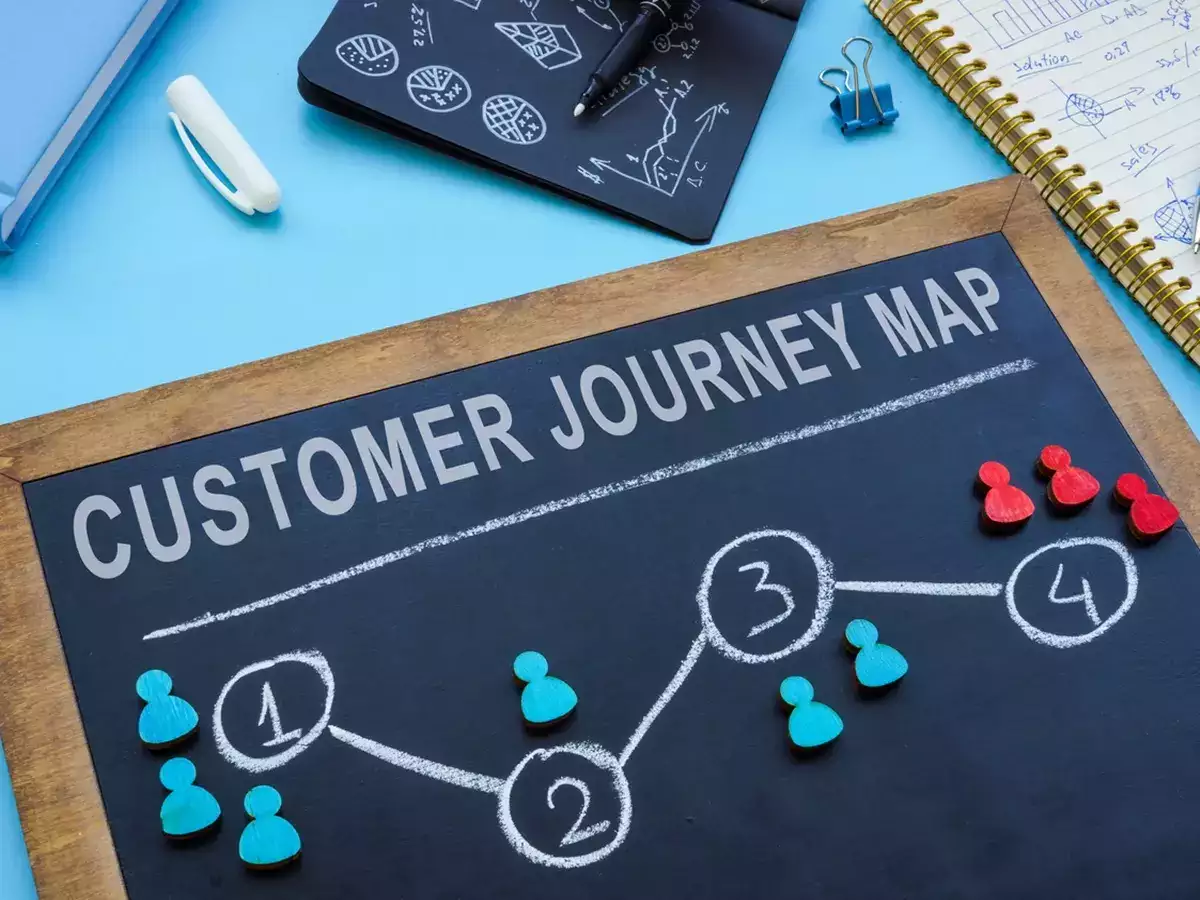The purpose of designing the digital journey effectively is to ensure that while brands have only limited influence over how a customer navigates through their touchpoints, a brand can still control their experience by building an omnichannel framework that supports and anticipates their journey better.

The modern customer is like a digital kangaroo – able to hop from one brand and one cart to another at a moment’s notice if the experience isn’t good enough. With their attention at such a high premium and several brands vying for it at all times, it is crucial to create a path to purchase that is seamless and avoids losing a potential customer to the competition.
But how can this be accomplished?
By creating a digital journey that reels a user in from the very first interaction and continues to engage and support them well after they have become paying customers.
What is a digital customer journey?
It is like a blueprint or map that outlines all the touchpoints a user goes through from the moment they first become aware of the brand, to buying its products and eventually becoming loyal advocates of the experience.
Broadly, this journey can be divided into the following stages:
1. Awareness
When prospects first become aware of the brand’s offerings through display ads, content on social media, and communication on channels like WhatsApp, email, and websites in the form of articles, videos, landing pages, etc.
2. Consideration
When the prospects like what they’ve seen so far, prompting them to engage further and do some additional research. This could be through interactions with website chatbots, response to CTAs on campaigns on social media, WhatsApp, SMS, email, etc., signing up to attend webinars, receiving newsletters, reviews, case studies, blogs, whitepapers, etc.
3. Purchase
This is when the prospect signs up for an account or logs into their existing one for purchase on the website, guided by a live agent or a follow-through on email, SMS, and WhatsApp conversation nudged by targeted offers.
4. Post-sales
When the order is fulfilled and there are timely updates and guidance provided to the customer with after-sales support. This is extended on channels like WhatsApp, email, SMS, FAQs on the website, and usage guides all of which can also be connected to initiate a human intervention for more complex requests.
5. Loyalty:
Incentivizing the buyers to make repeat purchases through loyalty and referral programs, exclusive offers, and priority customer support.
Why is it important?
Mapping out the digital customer journey is like putting together a puzzle – you may have discrete elements working for your brand, but it is only by putting the right pieces in their place that can help build the perfect picture, in this case, an effective customer experience. Thus, enabling brands to
– Empathize with the customer’s perspective and create a smoother purchase journey
– Build cohesion between different teams within the organization
– Make content and marketing much more targeted, personalized, and relevant
– Predict customer behavior more accurately
– Identify friction points in the overall funnel and use this to arrive at the highest value touchpoints
Creating a winning digital journey
The purpose of designing the digital journey effectively is to ensure that while brands have only limited influence over how a customer navigates through their touchpoints, a brand can still control their experience by building an omnichannel framework that supports and anticipates their journey better.
1. Using the existing sales funnel
Start by mapping out the touchpoints a customer has and how each of their interactions can organically funnel them into the next.
2. Putting yourself in the customer’s shoes
Walkthrough the sales funnel as an average customer might and ask questions.
-Which social media platform would they find you on?
-Can they easily find the required information on your website?
-Is the booking/purchase process intuitive?
3. Collecting relevant data
Data is key to making informed decisions.
– Web-browsing analytics, devices used
– Mobile app data, sign-in location, times of day, profiles
– Advertising CTR, A/B tests, conversion rate, cart abandonments
– Social media listening
– After-sales data
4. Creating personas
The larger you scale, the tougher it becomes to keep track of individual buyers. This is where personas – fictitious customer types – help by simulating the customer journey and revealing previously invisible gaps.
5. Using MarTech and business communication partners to consolidate, review, and refine
Having the right partner and the right MarTech is crucial to accelerate the iterative process and help in achieving the holy grail of building a winning customer journey – delivering personalization at scale.
– Role of MarTech
MarTech can help brands eclipse the competition by focusing on the right metrics across channels and using AI-powered predictive intelligence to drive traction, sales and eliminate gaps.
– Role of a business communication partner
Once the digital journey is visualized, the solutions provider can help in deploying engaging omnichannel communication campaigns, at scale and for the preferred channels – website, social media, WhatsApp, SMS, email, etc.
In conclusion, creating an incredible digital customer journey is ultimately about getting to know your customer inside out. With the process outlined above, you will gain insight into your own business goals, and what the customers need. Once these are covered, with the help of the right partners and technology, you can provide your customers with the personalized experience they need to become enthusiastic advocates of your brand.
Originally published in ET BrandEquity on 03 July 2022.



